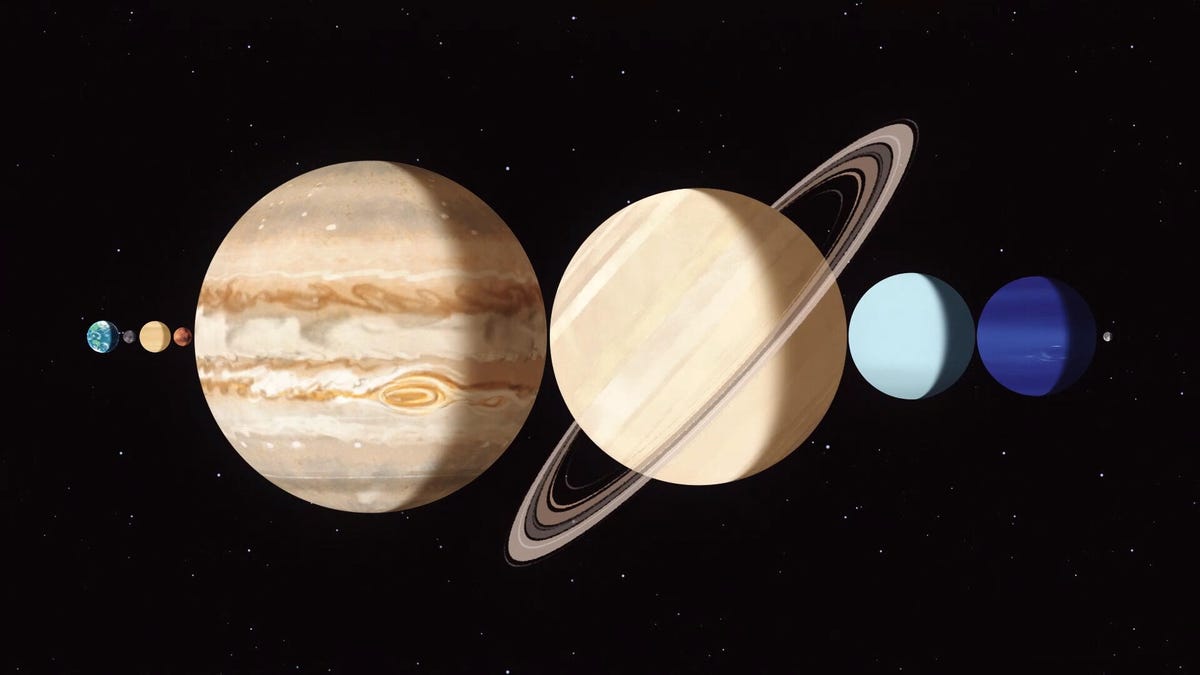How to see Mercury, Jupiter and Saturn in rare conjunction this weekend
The sequel to December's Great Conjunction is already here and easy to spot.

The two largest worlds and the smallest planet in the solar system make an appearance this weekend.
A trio of planets make an appearance at dusk this weekend when Jupiter and Saturn, still chilling together at the after-party from last month's rare Great Conjunction, will be joined just above the western to southwestern horizon by the more flighty planet Mercury. The planetary trio is a rare sight that can be witnessed with the naked eye just after sunset over the next several days, though Saturday evening offered perhaps the best opportunity to see the three worlds bunched together.
Astronomy magazine reports that the planets will all be visible within an area about 2.3 degrees across that evening (that's about the width of your pinky and ring finger together when they're held away from your body at arm's length). Mercury will be the lowest of the three in the sky, Jupiter will be the brightest and Saturn will be the dimmest.
Binoculars might help you get a better view, while even a cheap backyard telescope can offer a chance to glimpse some of the larger moons of Jupiter. This might be a good thing to try when Mercury and Saturn have disappeared below the horizon and it's a little darker out.
To be sure to catch the entire trio, the key is to get outside right after the sun sets as Mercury and Saturn will be quick to dip below the horizon within an hour. While the planets may be closest Saturday, they will continue to congregate while shifting around over the next several nights, so you have a few shots at catching them all like a kind of cosmic game of Pokemon.
As always, if the amateur astrophotographers among you grab any great images of the celestial gathering, please share them with me on Twitter @EricCMack.
Follow CNET's 2021 Space Calendar to stay up to date with all the latest space news this year. You can even add it to your own Google Calendar.

